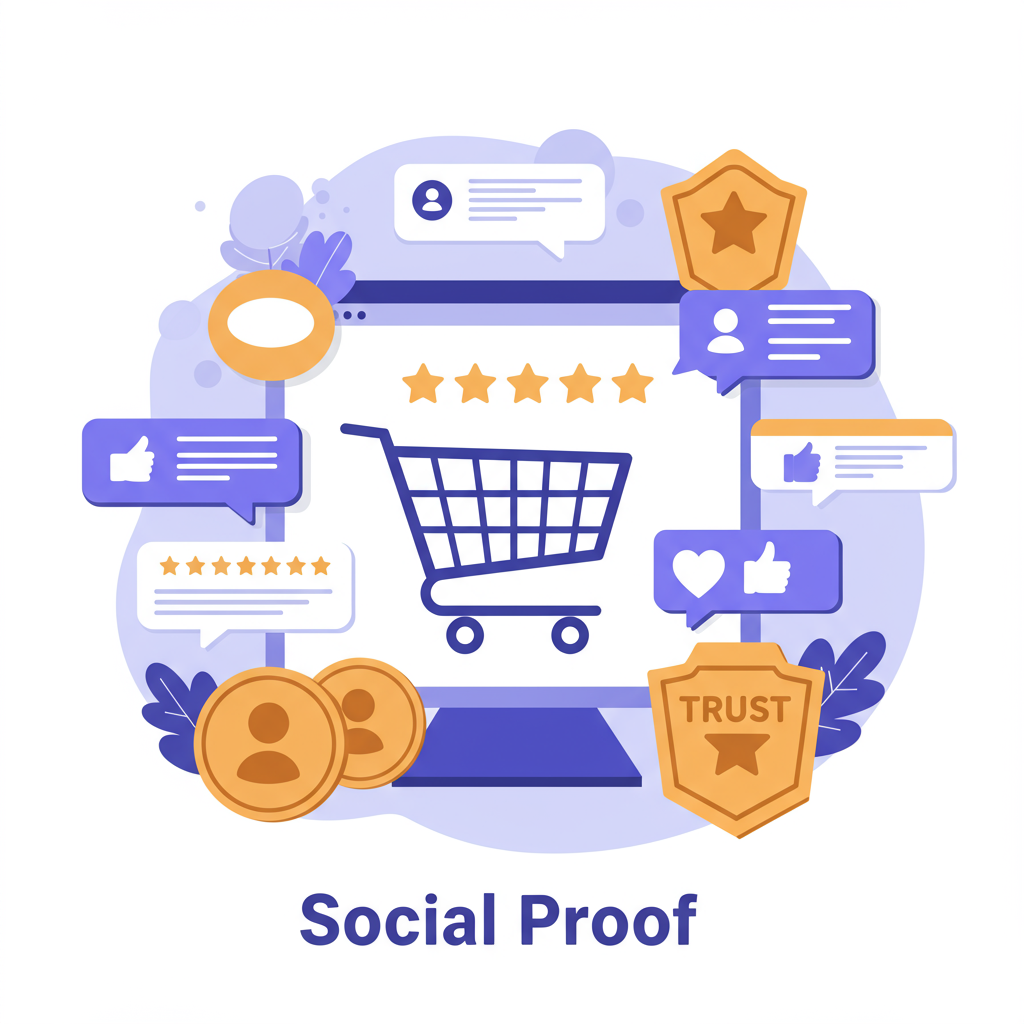Discover how leveraging customer trust and popularity can dramatically boost your sales and build a thriving e-commerce brand.
Hello fellow Shopify merchants! I’m here today to talk about one of the most powerful, yet often underutilized, tools in our e-commerce arsenal: social proof.
In the vast digital marketplace, building trust is paramount. Customers can’t physically touch our products or look us in the eye.
This is where social proof steps in, acting as a digital word-of-mouth, assuring potential buyers that others have tried, loved, and vouched for our offerings.
Essentially, social proof is the psychological phenomenon where people assume the actions of others in an attempt to reflect correct behavior for a given situation.
For us, as Shopify store owners, it means showcasing evidence that other people have purchased, used, and benefited from our products.
Why is this so crucial? Because it reduces perceived risk. When a new customer sees that hundreds of others have bought and enjoyed a product, their hesitation often melts away.
It’s about leveraging the wisdom of the crowd to influence purchasing decisions. Let’s dive into some actionable strategies I’ve found incredibly effective for Shopify stores.
The cornerstone of social proof is undoubtedly customer reviews. These are direct endorsements from people who have experienced your product firsthand.
I always recommend integrating a robust review app like Loox, Yotpo, or Stamped.io with your Shopify store. These apps automate review requests after a purchase.
Make it easy for customers to leave reviews. Send follow-up emails a few days after delivery, prompting them to share their experience.
Encourage photo and video reviews! Visual proof is incredibly powerful. Seeing a product in use by a real customer builds immense credibility.
Display these reviews prominently. Not just on product pages, but consider a dedicated “Reviews” page, or even a rotating carousel of testimonials on your homepage.
Don’t shy away from negative reviews. Respond professionally and publicly. It shows you care and are committed to customer satisfaction, often turning a negative into a positive.
Beyond formal reviews, User-Generated Content (UGC) is gold. This includes photos, videos, and posts customers share on social media featuring your products.
I actively encourage my customers to share their experiences by running contests, offering discounts for tagged posts, or simply asking them to use a specific hashtag.
Curate and display this content on your Shopify store. Apps can pull in Instagram feeds, or you can manually create a gallery. It’s authentic and highly relatable.
Your social media presence itself is a form of social proof. A high number of followers, likes, and shares indicates popularity and trustworthiness.
I make sure to link my social media profiles prominently on my Shopify store. Consider embedding a live feed of your latest posts if it’s active and engaging.
Actively engage with your audience. Respond to comments, run polls, and share behind-the-scenes content. This builds a community around your brand.
Collaborating with influencers, even micro-influencers, can introduce your brand to a new, engaged audience. Their endorsement acts as powerful social proof.
I look for influencers whose audience aligns with my target market and whose values resonate with my brand. Authenticity is key here.
Display any content created by influencers on your product pages or a dedicated “As Seen On” section. Their credibility transfers to your brand.
These are visual cues that instantly build trust. Think about payment gateway logos (Visa, Mastercard, PayPal), security badges (SSL certificates), or industry certifications.
I place these prominently in my footer, near the add-to-cart button, and on my checkout page. They reassure customers about the security of their transaction.
If your products have specific certifications (e.g., organic, cruelty-free, fair trade), display these logos proudly. They speak volumes about your brand’s values.
Showing real-time activity can create a sense of urgency and popularity. Apps can display “X people are viewing this product right now” or “Just sold X units!” notifications.
I also use “Bestseller” tags on my most popular products. This guides new customers towards what others are already loving.
Limited stock notifications or countdown timers for sales can also leverage the fear of missing out (FOMO), driving quicker purchase decisions.
If your product has been featured in reputable publications, won awards, or received endorsements from industry experts, showcase this.
I create a dedicated section for “Press” or “Awards” on my site. A quote from an expert or a logo of a well-known publication adds significant weight.
The Shopify App Store is your best friend for implementing many of these strategies. There are apps for reviews, UGC, trust badges, and sales pop-ups.
I always ensure that my social proof elements are seamlessly integrated into my store’s design, maintaining a professional and trustworthy appearance.
Consistency is vital. Don’t just set it and forget it. Regularly collect new reviews, update your UGC, and refresh your social media content.
Remember, social proof isn’t a one-time setup; it’s an ongoing process of building and showcasing trust.
By strategically implementing these social proof tactics, I’ve seen a significant increase in conversion rates and overall sales for my Shopify store.
It’s about creating a virtuous cycle: more trust leads to more sales, which leads to more social proof, and so on.
I truly believe that investing time and effort into these strategies will pay dividends for your e-commerce business.
What do you think about these strategies? Have you tried any of them, or do you have other effective methods you’d like to share?
I hope this detailed guide helps you unlock the full potential of social proof for your Shopify store. Go forth and build that trust!






